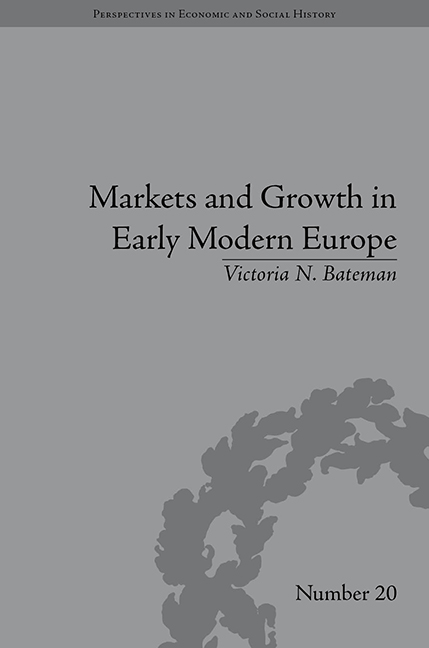Book contents
- Frontmatter
- CONTENTS
- List of Figures and Tables
- Acknowledgements
- Preface
- Introduction
- 1 Markets in History: A Survey
- 2 The Course of Early Modern Market Integration: Country-Level Results
- 3 The Course of Early Modern Market Integration: The Mediterranean and the North-West Region
- 4 Early Modern Market Integration in a Longer Run Perspective
- 5 The Causes of Early Modern Market Integration and Disintegration
- 6 The Consequences of Early Modern Markets: An Examination of the Relationship between Markets and Economic Growth
- 7 Conclusions and Implications for Economic Policy and the Modern Day
- Notes
- Works Cited
- Index
Introduction
- Frontmatter
- CONTENTS
- List of Figures and Tables
- Acknowledgements
- Preface
- Introduction
- 1 Markets in History: A Survey
- 2 The Course of Early Modern Market Integration: Country-Level Results
- 3 The Course of Early Modern Market Integration: The Mediterranean and the North-West Region
- 4 Early Modern Market Integration in a Longer Run Perspective
- 5 The Causes of Early Modern Market Integration and Disintegration
- 6 The Consequences of Early Modern Markets: An Examination of the Relationship between Markets and Economic Growth
- 7 Conclusions and Implications for Economic Policy and the Modern Day
- Notes
- Works Cited
- Index
Summary
For much of history, the standard of living was poor and subject to little improvement. For many, life was ‘poor, nasty, brutish, and short’, and people could not look forward to a better life for their children and grandchildren. Today, we expect our incomes to rise year on year, and hope that our children will experience a life of which their great-grandparents could only have dreamed. The economic growth that has enabled this to occur began with the onset of the British Industrial Revolution in the late eighteenth century. It completely transformed the economy and the way in which we lived our lives, ushering in the near-continuous economic growth that we now take for granted.
One of the most important questions that economic historians seek to answer, is how to explain this take-off to modern economic growth: How did we go from a situation in which for centuries the average level of economic growth was close to zero, to a new era from the early nineteenth century onwards in which incomes rose year on year? And, related to this, why was Europe the first region to see this process of ‘modern economic growth’? As one notable economist famously said, ‘once one starts to think about [this question] … it is hard to think of anything else’. That sustained long-run economic growth can lift large parts of a population out of poverty means that the benefits to understanding its causes are very great indeed.
- Type
- Chapter
- Information
- Markets and Growth in Early Modern Europe , pp. 1 - 10Publisher: Pickering & ChattoFirst published in: 2014

